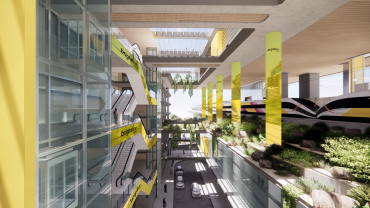Old City-Owned Buildings, Primarily in the Outer Boroughs, Getting $384M Cash Infusion
By Terence Cullen January 24, 2017 8:07 pm
reprints
Mayor Bill de Blasio plans to pour $384.2 million into some of the city’s office buildings over the next decade, according to his preliminary capital plan released today.
A bulk of that money will go toward renovation and rehabilitation projects at the city-owned 345 Adams Street in Downtown Brooklyn, the proposal indicates. Indeed, nearly $95 million is proposed to go into the 1920s property, which is occupied by the New York City Department of Finance, New York Department of Probation and New York City Board of Elections.
The upgrades are part of a proposed $89.4 billion, 10-year budget that would cover the year beginning on July 1, 2017 and carry through June 30, 2027. Much of that money has been dedicated to infrastructure investments—such as the office building upgrades—as well as paving roads and creating more space in schools.
“We have crying needs that have to be addressed,” de Blasio said of infrastructure investment during this afternoon’s nearly two-hour budget presentation before members of the press.
Construction at some city-owned properties includes upgrading mechanical, plumbing and electrical and heating and cooling systems.
Three of the city’s office buildings could also get money for capital improvements. Hizzoner is seeking $39.1 million for renovations at the Brooklyn Municipal Building at 210 Joralemon Street; $16.7 million toward work at the David Dinkins Manhattan Municipal Building at 1 Centre Street in the Financial District; $8.7 million for projects at Queens Borough Hall at 120-55 Queens Boulevard; and $3.5 million for the Bergen Building at 1932 Arthur Avenue in the Bronx.
At 253 Broadway in Lower Manhattan, of which the city is a part owner and has offices on the upper floors, the budget calls for $18.5 million in improvements. And there is another $13 million being sought for construction of a new computerized testing and applications center in the Bronx at 2556 Bainbridge Avenue, formerly home to the Bronx Central Library.
The mayor’s office also plans on investing $230.8 million in upgrades to offices for agencies lease at buildings not owned by the city. A significant part of that will go toward an $85 million expansion of the New York City Office of Emergency Management digs at 165 Cadman Plaza East in Downtown Brooklyn.
The 130-page capital budget also seeks to invest $571 million in the city’s bridges over the next decade, as well as investment in storm resiliency for flood-prone areas.
The Democratic mayor said he was pushing for infrastructure investment amid what he called uncertainty from President Donald Trump and a Republican-controlled Congress, despite the fact both have signaled they want to spend money on infrastructure improvements.
Carlo Scissura, the president and chief executive officer of the New York Building Congress, said in a statement following the mayor’s address that the capital investments would be a boon.
“The strategic investments in infrastructure, including the completion of all aspects of the third water tunnel, repair of city bridges and repaving of roads, will have incredible long-term impacts,” he said. “We look forward to working with the mayor and his team to implement his bold vision for the future of New York City.”
De Blasio, who is up for re-election in November, also said he would not look into reforming property taxes in the near future, although he indicated he would like to see the city’s current system examined at some point.
“I’m standing exactly where I was,” the mayor said on his decision. “At the appropriate time there needs to be an overall effort to reform our property taxes.”
Some landlords have argued that the tax system puts what they believe is an unfair burden on multifamily rental buildings (anything with four units or more), while co-operatives, condominiums and single-family homes are taxed at a lower rate.
The mayor also said that the revival of the 421a tax abatement program could become costly to the city. Gov. Andrew Cuomo last week introduced a replacement plan to the state legislature called “Affordable New York” that keeps affordable housing units below market rate for 40 years. But de Blasio indicated today that he was concerned about an effort by some legislators to make luxury condominiums eligible under the program again (they were previously covered, but not included in Cuomo’s bill).


